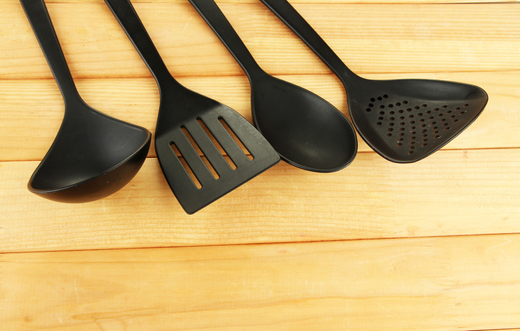Most of us are familiar with Organic certifications for food or drinks, but what about certifying organic bamboo utensils? Here’s an inside look at our yearly organic audit.
When we first embarked upon the journey to certify our bamboo as organic, it was a pretty new idea. Organic certification for things like tea and fresh produce was common. But in 2007 we turned a new chapter bycertifying bamboo. In fact, nothing other than tea or food had ever gone through the organic certification process in China before we started the process with our bamboo utensils and Veneerware line of compostable plates.
Our yearly organic audit monitors our bamboo from forest to final packaging. But for us, it’s well worth it. Here’s a look at just what it takes to become (and remain) the only company with certified organic cooking and eating utensils as well as certified compostable and organic bamboo plates.
First things first. Who decides what “Organic” is?
In order to begin the USDA National Organic Program (NOP) organic certification process, bambu has to be audited by an approved certifying body. This is a third-party body that reviews our materials and operations from start to finish. Their goal? To determine if our products meet standards set by the NOP.

It’s no wonder that the Certified Organic seal is proudly shown on organic products. Meeting the standards is no small task. Every aspect of an organic product is carefully monitored to ensure that the item is entirely free of chemicals and anything artificial. While certifying food is easier to understand, certifying products like organic bamboo requires careful inspection and testing from the forest to the final product.
At Bambu, we have two types of organic products. Our 100% organic bamboo utensils, which are crafted from a single piece of certified organic bamboo and finished with certified organic linseed oil. This line of utensils are the first and only utensils to be USDA certified as organic. Then, we have a compostable line of plates and cutlery that are made with certified organic bamboo, but use a bit of water-based adhesive in the production process. While our Veneerware line of compostable items doesn’t receive the 100% USDA organic designation due to a non-certified organic adhesive, the organic bamboo we make them from must still be certified each year to meet organic standards.
Bambu uses an internationally accredited certifying body, LETIS, to run our yearly organic audits. That’s right- yearly. Many people don’t know that being certified organic is an ongoing process. The same standards must be met each year, or else the organic certification will be removed. For our annual organic audit, a LETIS certifier comes to inspect our bamboo at the source. In the case of bambu, this means travelling to the Fujian Province of China.

The journey starts on Bamboo Mountain
Bambu sources its bamboo from China for a good reason- wild bamboo grows abundantly throughout the country! In Fujian Province, where our bamboo is grown, the government leases land to farmers that manage these wild bamboo forests sustainably. Surprisingly, bamboo grows particularly well on steep slopes, so at bambu, we refer to our source as ‘Bamboo Mountain.’ Seeing our bamboo growing naturally as a wild crop in the mountains of China is quite a beautiful sight to see (and we think our certifier enjoys the journey, too).
During the organic audit, our LETIS certifier joins the farmers we work with to inspect the bamboo right where it’s grown. In order to achieve organic certification in the first place, we had to prove that no pesticides or fertilizers were used in the area in the last three years. During this inspection, tests are done to ensure that no pesticides or chemicals of any kind are used on the bamboo. This ensures that the growing environment is free of harmful toxins. Luckily, bamboo is easily grown in its natural habitat without the need for fertilizers or other additives. Combined with the fact that it's one of the fastest growing plant in the world, it’s easy to see why bamboo meets the gold standard of renewable materials.
At this point in the audit, the farmers are also interviewed about their growing and managing practices. Bambu farmers mark and monitor their bamboo stalks to gauge the proper harvesting time. Once it’s mature, the organic bamboo is cut down, but the roots remain. This allows the bamboo to grow back year after year without killing the plant or causing soil erosion.

Next, we head to the Bambu production site
Once bamboo is harvested from its wild growing site, the organic audit process moves to the production site. Bambu production sites are typically housed within a few hours of where the bamboo is grown in the Fujian province (which is also known for its top grade tea). Keeping the sites as close as possible reduces the emissions released in the transportation process.
Once at the production site, the certifier carefully monitors the process that we put our organic bamboo through. What are they watching for? Any use of chemicals or treatments that would take away from the purity of our organic material. The materials must be well organized and not mix with other items that are not certified organic material.

So, how do we turn organic wild bamboo into bambu products? First off, the wild bamboo is still quite green and wet when it’s harvested. It must be cut into manageable pieces and given time to dry before it’s crafted into our bamboo kitchen utensils and plates. Instead of chemical treatments, we use processes as natural as the material. For our organic bamboo plates, the harvested bamboo is softened in boiling water in order to make it easier to shape and cut. For utensils, the materials are cut into smaller pieces to make them workable. Then, the organic bamboo is shaped and sanded by hand.


The final touches to our organic bamboo matter
Our yearly audit doesn’t end until our products are completely finished. After these items are shaped into their final form, they enter a finishing process. Veneerware plates and cutlery go through a UV sanitation process, and are then packaged in low-waste materials for shipping.
Our utensils look and perform best with a gentle finish, and to meet the 100% organic certification, our finishing material must be certified organic as well. That’s why we keep it simple and natural with organic linseed oil. Before packaging, just a touch of organic linseed oil is rubbed on to our bamboo utensils to finish them with an all-natural shine.
From start to finish, each year's organic audit is a long road. It’s a time-consuming process that few attempt. But when it comes to the health of our customers and our planet, it’s clear that organic is a certification worth achieving.

So- why choose organic bamboo?
It’s simple- certifying our products as organic from start to finish ensures that we are producing items free of harmful chemicals and additives. For the environment, certified organic means clean soil, water, and air. For our farmers and production workers, there is no worry about the safety of their working conditions or the substances they handle. And for our consumers, there’s a guarantee that our products are safe for them and their families.
The yearly process to certify our organic bamboo utensils and plates is just another reminder of our commitment to doing business for good.
Did you like this inside look at our yearly organic audit? Learn more about the processes behind our products on our certifications page.





